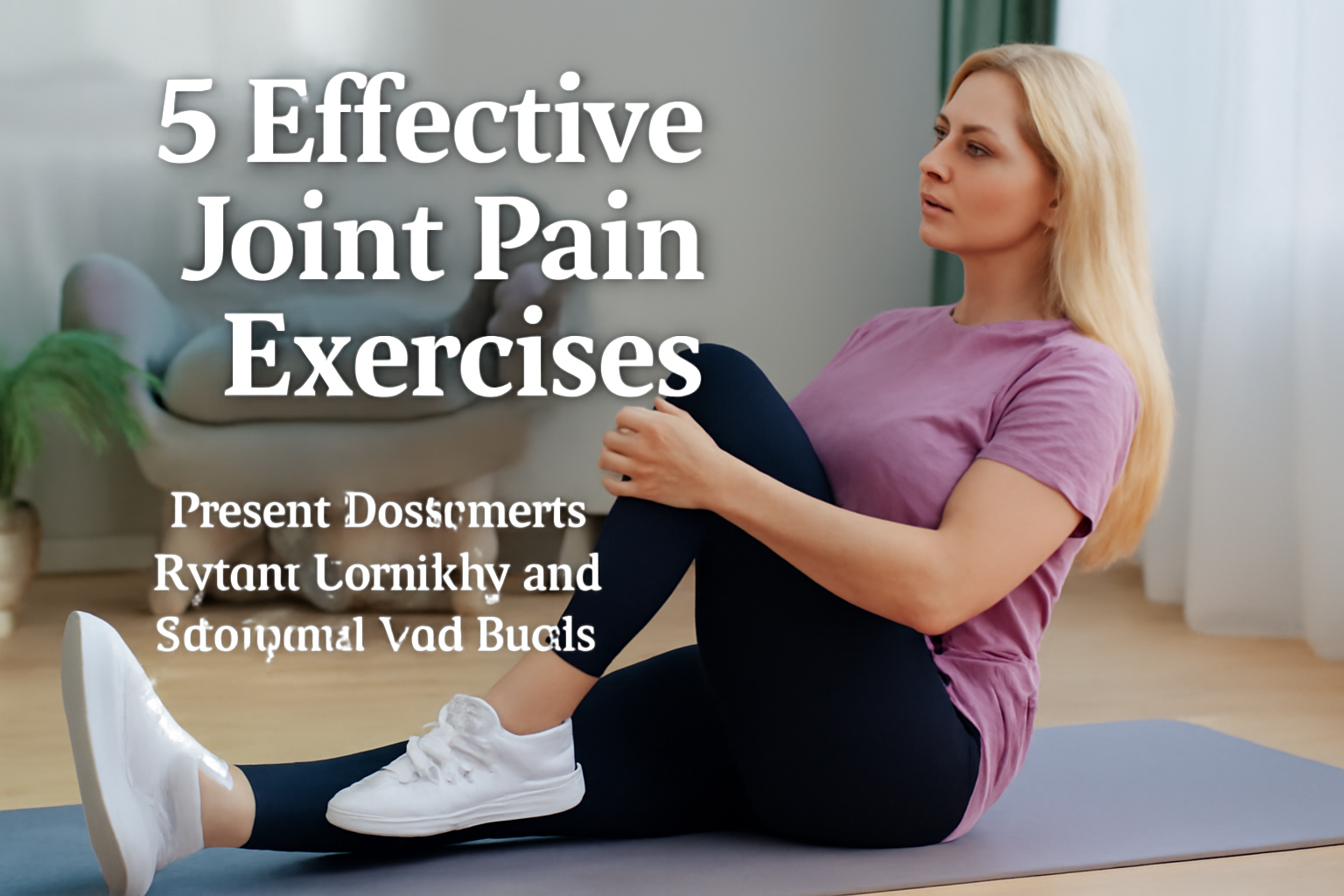Millions of people around the world struggle with joint pain, whether due to overuse, aging, or an underlying health condition. Joint pain can affect your daily routine, but the good news is that simple joint pain exercises and lifestyle changes can help relieve discomfort, protect your joints, and even prevent further pain. Here are five habits, including joint pain exercises, to keep your joints healthy.
1. Keep the Weight Off with Exercises for Joint Pain
Excess weight can put unnecessary strain on your joints, particularly the knees, hips, and lower back. For every pound you carry, your knees experience an additional four pounds of pressure, increasing the risk of joint conditions like osteoarthritis.
The Benefits of Joint Pain Exercises:
- Joint pain exercises like low-impact activities help with weight loss and maintain a healthy body, relieving strain on your joints.
- Incorporating walking, biking, and swimming into your routine will keep you fit without overloading your joints.
- A healthy weight prevents joint inflammation and damage over time.
By staying at a healthy weight, you’ll protect your joints from excess pressure, avoiding pain and long-term damage.
2. Stretch and Strengthen with Joint Pain Exercises
Joint pain is often caused by muscle imbalances and tightness, especially around the knees, shoulders, and hips. Regular stretching and strengthening exercises can improve flexibility, reduce muscle tension, and alleviate joint pain.
How to Stretch and Strengthen:
- Stretch regularly: Focus on major muscle groups that support your joints, such as the quads, hamstrings, and calves.
- Strengthening exercises: Incorporate squats, lunges, and resistance exercises into your routine to build strength around your joints.
Strong muscles reduce strain on your joints, preventing injury and providing better joint protection.
Incorporating joint pain exercises like these into your routine can help alleviate tension and prevent joint discomfort.
3. Posture and Ergonomics Matter for Joint Pain Relief
Improper posture and body mechanics can lead to unnecessary strain on your joints. Whether you’re sitting, lifting, or sleeping, maintaining proper posture is essential for joint health.
Posture and Ergonomics Tips:
- Seated posture: Keep your feet flat on the floor, knees at a 90-degree angle, and back supported by a chair with lumbar support.
- Correct lifting: Bend your knees and keep your back straight when lifting heavy items to protect your joints.
- Sleep positioning: A supportive mattress helps, and sleeping on your side or back is often better for your joints than sleeping on your stomach.
Making small changes to your posture and body mechanics can reduce joint strain and relieve pain.
4. Low-Impact Joint Pain Exercises to Keep You Moving
Regular physical activity is essential for joint health, but high-impact exercises can increase joint strain, especially if you’re already experiencing pain. Low-impact joint pain exercises provide the perfect balance of movement without overloading your joints.
Low-Impact Exercises for Joint Pain:
- Walking: A simple, effective exercise that keeps your joints moving without excess pressure.
- Swimming or water aerobics: Water’s buoyancy reduces gravity’s effect on your joints, providing resistance while being gentle on them.
- Cycling: A joint-friendly exercise that builds muscle strength without stressing your joints.
Keeping your joints lubricated and mobile is key, and these joint pain exercises can help you achieve that.
5. Wear the Right Shoes for Joint Health
Your feet are the foundation of your body, and wearing the right shoes is crucial for joint health. Poor footwear can lead to misalignment, which can cause pain in your knees, hips, and lower back.
How to Wear Footwear for Good Joints:
- Flat shoes: Avoid high heels that force your body into an unnatural position, putting unnecessary pressure on your joints.
- Arch support: Proper arch support helps distribute weight evenly across your feet and reduces strain on your joints.
- Custom orthotics: If you have specific foot needs, custom orthotics provide additional support and cushioning to protect your joints.
Choosing the right shoes can help prevent joint pain and keep you comfortable throughout the day.
Conclusion: Take Action Now to Protect Your Joints with Joint Pain Exercises
Joint pain doesn’t have to be a permanent part of your life. By incorporating joint pain exercises and making simple lifestyle changes, you can reduce your risk of developing further joint issues. Start adding these habits into your daily routine now and enjoy better joint health in the long run.
Need More Help with Your Joint Pain?
If you’re already suffering from joint pain or need advice on how to protect your joints, we’re here to help. Schedule a consultation with our experts and learn more tips to maintain your orthopedic health.


